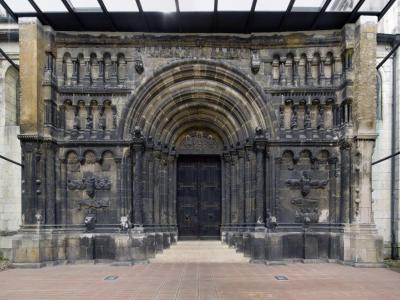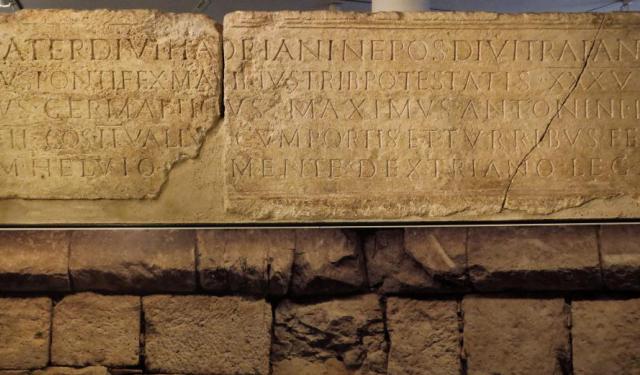
Scots Monastery, Regensburg (must see)
The Scots Monastery is a historic Benedictine Abbey of Saint James. Founded in the 11th century by Irish missionaries, the monastery was predominantly occupied by Irish monks initially and later by Scottish monks. The official name of the monastery church is "The Irish Benedictine Abbey Church of St. James and St. Gertrude."
Originally constructed to the south of the city walls around 1070, the abbey soon became too small to accommodate the growing number of Irish monks. As a result, a new site was acquired outside the western city gate, and construction of a new abbey began around 1100. Around 1300, as the city walls were extended, St. James became integrated into the fortified city, and the adjacent western gate came to be known as the Jakob Tower.
The first abbey church, built at the beginning of the 11th century, was a three-aisled basilica with three apses. While only the eastern end of this building, including the apses and two flanking towers, remains intact, traces of the western wall have been discovered, suggesting that the original structure was shorter but of similar width to the present building.
A new church, which largely survives to this day, was constructed between 1175 and 1180. It exemplifies Romanesque architecture, featuring a three-aisled basilica with three apses, towers at the eastern end, and a transept at the western end. The transept houses a gallery that spans all three aisles and now houses an organ.
The most renowned architectural feature of the church is its north portal, known as the Scottish portal. Occupying a third of the north wall, the portal is lavishly adorned with ornamental and figural sculptures.
The interpretation of the sculptural program on the Scottish portal has been a subject of debate since the early 19th century. The portal is divided into three horizontal and three vertical sections. The lower level showcases a richly decorated doorway flanked by relief sculptures on flat fields. The middle level comprises a tympanum and archivolt in the center, with blind arcades adorned with caryatids on either side. The upper level depicts a frieze depicting Christ and the twelve apostles at the center, flanked by figureless blind arcades on both sides.
Originally constructed to the south of the city walls around 1070, the abbey soon became too small to accommodate the growing number of Irish monks. As a result, a new site was acquired outside the western city gate, and construction of a new abbey began around 1100. Around 1300, as the city walls were extended, St. James became integrated into the fortified city, and the adjacent western gate came to be known as the Jakob Tower.
The first abbey church, built at the beginning of the 11th century, was a three-aisled basilica with three apses. While only the eastern end of this building, including the apses and two flanking towers, remains intact, traces of the western wall have been discovered, suggesting that the original structure was shorter but of similar width to the present building.
A new church, which largely survives to this day, was constructed between 1175 and 1180. It exemplifies Romanesque architecture, featuring a three-aisled basilica with three apses, towers at the eastern end, and a transept at the western end. The transept houses a gallery that spans all three aisles and now houses an organ.
The most renowned architectural feature of the church is its north portal, known as the Scottish portal. Occupying a third of the north wall, the portal is lavishly adorned with ornamental and figural sculptures.
The interpretation of the sculptural program on the Scottish portal has been a subject of debate since the early 19th century. The portal is divided into three horizontal and three vertical sections. The lower level showcases a richly decorated doorway flanked by relief sculptures on flat fields. The middle level comprises a tympanum and archivolt in the center, with blind arcades adorned with caryatids on either side. The upper level depicts a frieze depicting Christ and the twelve apostles at the center, flanked by figureless blind arcades on both sides.
Want to visit this sight? Check out these Self-Guided Walking Tours in Regensburg. Alternatively, you can download the mobile app "GPSmyCity: Walks in 1K+ Cities" from Apple App Store or Google Play Store. The app turns your mobile device to a personal tour guide and it works offline, so no data plan is needed when traveling abroad.
Scots Monastery on Map
Sight Name: Scots Monastery
Sight Location: Regensburg, Germany (See walking tours in Regensburg)
Sight Type: Attraction/Landmark
Guide(s) Containing This Sight:
Sight Location: Regensburg, Germany (See walking tours in Regensburg)
Sight Type: Attraction/Landmark
Guide(s) Containing This Sight:
Walking Tours in Regensburg, Germany
Create Your Own Walk in Regensburg
Creating your own self-guided walk in Regensburg is easy and fun. Choose the city attractions that you want to see and a walk route map will be created just for you. You can even set your hotel as the start point of the walk.
Roman Ruins Walking Tour
Meandering through the Old Town of Regensburg, it’s easy to forget that some 1800 years ago most of this area was occupied by a Roman fortress. Although the first settlement here dates from as early as the Stone Age, it is the Romans who put it firmly on the map.
Around 90 AD, they first built an expeditionary and then a permanent military camp called Castra Regina ("Fortress by the... view more
Tour Duration: 1 Hour(s)
Travel Distance: 1.4 Km or 0.9 Miles
Around 90 AD, they first built an expeditionary and then a permanent military camp called Castra Regina ("Fortress by the... view more
Tour Duration: 1 Hour(s)
Travel Distance: 1.4 Km or 0.9 Miles
Regensburg Introduction Walking Tour
"The jewel of Bavaria," as some affectionately refer to it, the German city of Regensburg is the biggest medieval site north of the Alps. Although its history spans nearly 2,000 years, here, the past does not seem like a distant memory and its weight blends seamlessly with the pulse of modern life.
The precursor to Regensburg, a military camp called Castra Regina ("Fortress by... view more
Tour Duration: 2 Hour(s)
Travel Distance: 4.1 Km or 2.5 Miles
The precursor to Regensburg, a military camp called Castra Regina ("Fortress by... view more
Tour Duration: 2 Hour(s)
Travel Distance: 4.1 Km or 2.5 Miles


